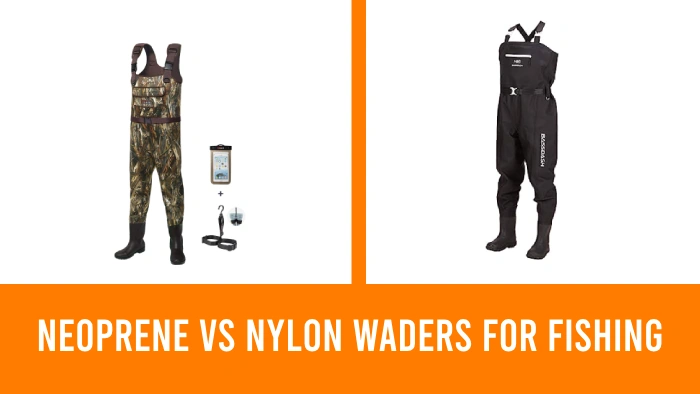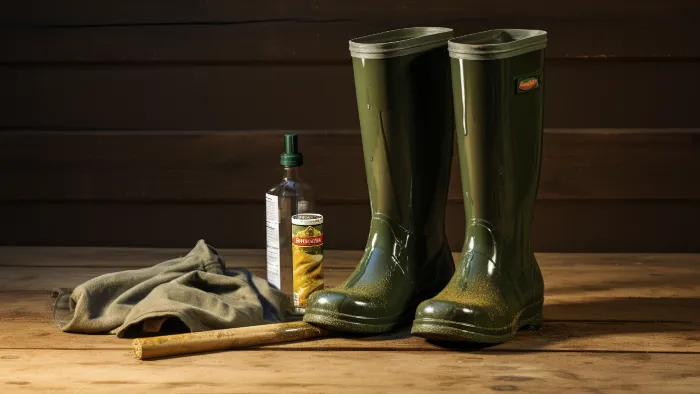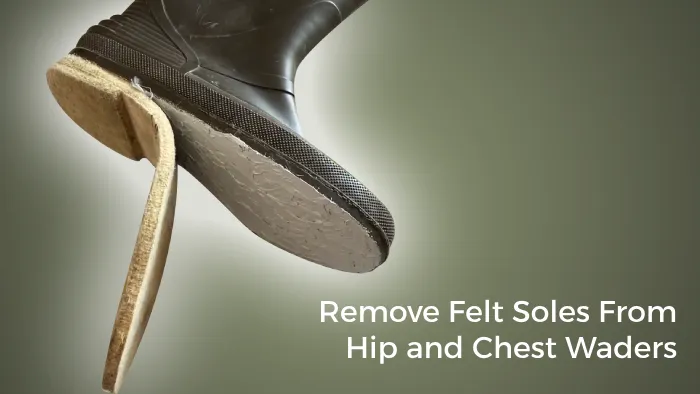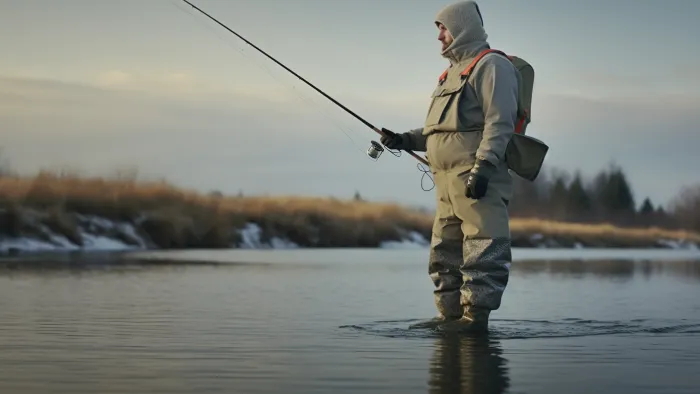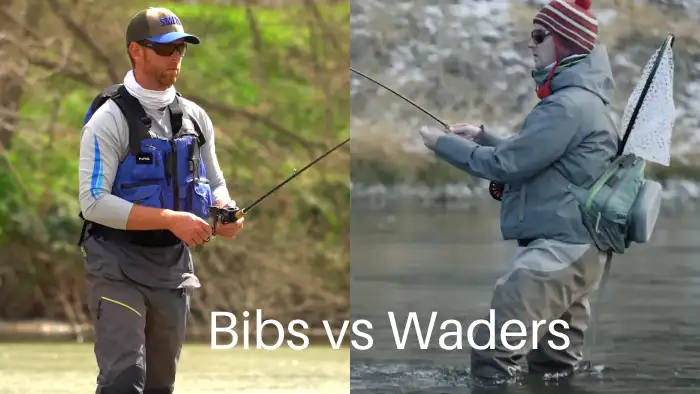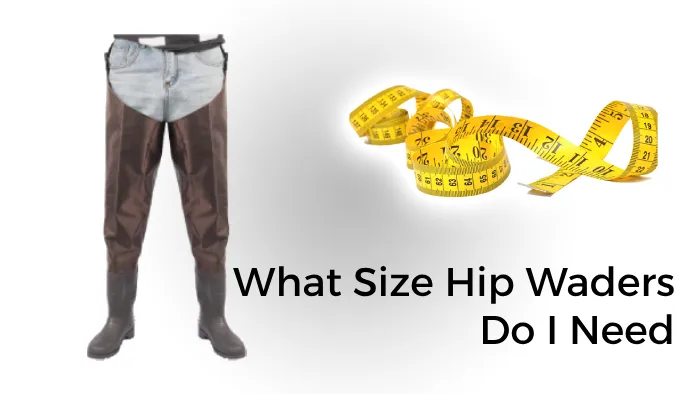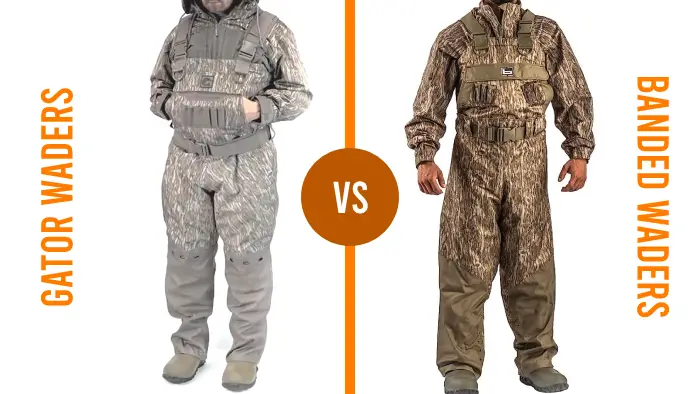Neoprene vs Nylon Waders for Fishing: 8 Key Differences
If there’s one thing that can keep your feet dry and comfortable on your fishing trip, it’s the quality of your waders. With so many available options, knowing which material best fits your needs can be tough, particularly when considering neoprene or nylon waders.
When deciding between these two materials, consider the weather conditions in which you’ll be fishing. Neoprene waders are recommended for winter fishing and provide insulation and warmth in cold conditions. Nylon waders are ideal for summer fishing and offer breathability, comfort, and lightweight flexibility.
Today we will discuss the considerable differences between neoprene and nylon waders. So, read on to discover the key differences between the two materials and determine which type of waders might best fit you.
Key Differences Neoprene and Nylon Waders for Fishing
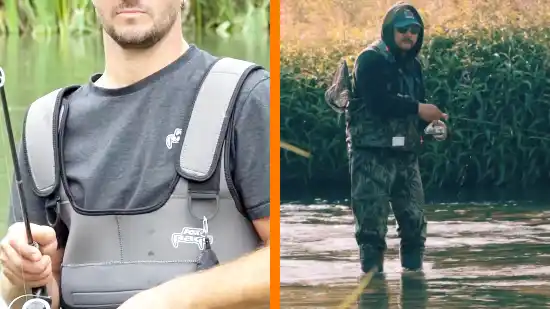
Several key differences exist when choosing between neoprene and nylon waders for fishing. But the material differences between the two options are crucial in their overall performance.
- Material Differences
- Durability
- Puncture Resistance
- Draw Moisture Away
- Traction on Slippery Surfaces
- Insulation Capabilities
- Weight and Versatility
- Cost Comparison
Material Differences:
To fully understand the distinctions between neoprene and nylon waders, you should consider the material differences. Here are some key points to keep in mind:
- Waterproofing: Neoprene waders are naturally waterproof, ensuring you stay dry even in wet conditions. Conversely, nylon waders rely on a waterproof membrane like Gore-Tex to keep water out, providing reliable protection against moisture.
- Flexibility and mobility: Neoprene waders tend to be less flexible and can somewhat restrict movement due to their thickness. Being lightweight and breathable, nylon waders offer greater flexibility and freedom of movement, making them ideal for activities that require agility.
- Temperature regulation: Neoprene waders excel in insulating capabilities, making them suitable for colder conditions. With their breathable nature fabric, nylon waders are better suited for warmer weather as they allow heat and moisture to escape, keeping you comfortable.
Durability:
In terms of durability, nylon waders have the upper hand. Their resistance to tears and punctures makes them an excellent choice for rugged activities.
Neoprene waders, meanwhile, may not fare as well in this department. While they provide better puncture resistance, their thickness can make them more susceptible to wear and tear.
So, if you plan on engaging in strenuous activities requiring high flexibility and lightweight gear, nylon waders are definitely the way to go.
Puncture Resistance:
Fishing can be a rugged sport, and waders that can withstand the elements and debris are essential. In terms of puncture resistance, neoprene waders are the clear winner. These waders are thicker and more durable than their nylon counterparts, making them more puncture-resistant.
Conversely, nylon waders are less puncture-resistant than neoprene waders. Nylon is inherently thinner than neoprene, which makes it more susceptible to punctures and tears. The only advantage nylon waders have over neoprene waders regarding puncture resistance is that they can be repaired more easily.
Draw Moisture Away:
When you are fishing, you will inevitably sweat, and your waders need to be able to absorb and wick the moisture to keep you dry and comfortable. In terms of moisture-wicking, nylon waders are the clear winner.
Nylon is a breathable material that can draw moisture away from your skin and evaporate quickly, leaving you feeling cool and fresh.
Neoprene waders, however, are not as breathable and can leave you feeling hot and sweaty.
Traction on Slippery Surfaces:
When fishing, you will encounter a variety of slippery surfaces, such as rocks, mud, and stream beds. Therefore, you need waders that can provide you with stable footing and prevent you from slipping.
Regarding traction on slippery surfaces, neoprene and nylon waders provide excellent grip. However, neoprene waders have slightly better traction than nylon waders. This is because neoprene waders usually come with thicker soles and reinforced toe caps, which provide better traction on slippery surfaces.
Insulation Capabilities:
For those fishing in extremely cold water, you’ll want gear that provides excellent insulation. Neoprene waders are the go-to choice rather in such conditions as they offer better insulation than nylon waders.
Here’s why neoprene waders excel in insulation capabilities:
- Thickness: Neoprene waders are typically thicker than nylon waders, which helps retain body heat and keep you warm even in freezing temperatures.
- Material: Neoprene is a synthetic rubber that has excellent insulating properties. It traps and retains body heat, creating a barrier against cold water.
- Seams and stitching: Neoprene waders often feature sealed seams and reinforced stitching, minimizing the chance of cold water seeping in.
Weight and Versatility:

Although neoprene waders are renowned for their insulation capabilities, it’s worth considering the weight and versatility of nylon waders.
While providing excellent insulation, Neoprene waders tend to be heavier and less flexible than their nylon counterparts. This can limit your mobility and make long hours of fishing or hunting uncomfortable.
In contrast, nylon waders are lightweight and offer better flexibility and ease of movement. They’re made with lightweight Gore-Tex fabric, providing optimal performance and breathability to keep you comfortable and dry.
The breathable nature of Gore-Tex fabric allows moisture to escape, preventing overheating and perspiration buildup. This makes nylon waders a great choice for activities requiring extended movement periods or warmer weather conditions.
Cost Comparison:
Nylon waders’ affordability makes them a popular choice for budget-conscious water enthusiasts. Regarding cost comparison, neoprene waders are more expensive than nylon waders. This price difference can be attributed to the materials used in their construction.
Neoprene waders are constructed from a synthetic rubber material known for their insulating properties, making them ideal for colder water conditions. Conversely, nylon waders are made from a lightweight, durable fabric that provides adequate protection without added insulation.
Are nylon or neoprene waders better for winter?
Regarding winter fishing, neoprene waders outperform breathable nylon versions in tough conditions and colder weather.
Neoprene waders are designed to provide excellent insulation and protection against the elements. The thick, rubber-like material offers superior warmth retention, making them ideal for use in freezing temperatures.
Also, neoprene waders are highly resistant to water penetration, ensuring you stay warm even in wet and snowy conditions. This is particularly important during winter fishing when water temperatures can be extremely cold and prolonged exposure can lead to discomfort and even hypothermia.
Furthermore, neoprene waders are more durable and abrasion-resistant compared to nylon waders. They can withstand rough terrains, sharp rocks, and other hazards you may encounter while fishing in winter.
The robust construction of neoprene waders also provides better protection against tears and punctures, ensuring they will last longer and serve you well throughout the season.
Are neoprene waders too hot for summer?
If you’re considering the best type of waders for summer fishing or outdoor activities, it’s important to consider the material they’re made of.
While neoprene waders are great for colder temperatures, they may not be ideal for hot summer days. Neoprene is a synthetic rubber that provides excellent insulation, keeping you warm in cold water. However, this insulation can trap heat during warmer weather, making neoprene waders uncomfortable and causing excessive sweating.
Alternatively, nylon waders offer a lightweight and breathable alternative for summer use. They’re made from a durable, quick-drying fabric that allows air to circulate, keeping you cool and comfortable even in high temperatures.
Nylon waders are also more flexible and easier to move around, making them a better choice for walking long distances or extended strenuous activity. So, if you’re planning to fish or engage in outdoor activities during the summer months, opting for nylon waders over neoprene is recommended.
Nylon or Neoprene waders: Which one is most durable for regular use?
Looking for durable waders for regular use? Opt for neoprene. This thicker option can provide excellent insulation and durability, making it perfect for outdoor adventures.
Neoprene waders are known for their ability to withstand the test of time. Neoprene, a synthetic rubber material, is highly resistant to wear and tear. It offers superior durability compared to nylon waders, making it a preferred choice for those who need waders that can handle regular use.
Whether fishing, hunting, or enjoying the great outdoors, neoprene waders are designed to withstand various conditions. Not only are neoprene waders built to last, but they also provide excellent insulation.
The thickness of the material ensures that you stay warm and comfortable even in cold water or harsh weather conditions. This insulation feature makes neoprene waders a versatile choice for year-round use.
How long should neoprene waders last?

Neoprene waders are known for their excellent insulation properties and ability to keep you warm in cold waters. But how long can you expect them to last? As a general guideline, you can get around 3-4 seasons of use from a pair of mid-range neoprene waders with moderate use.
That being said, the lifespan of neoprene waders can vary depending on a few factors. The frequency and intensity of your fishing trips, the care and maintenance you provide, and the overall quality of the waders all play a role in determining their longevity.
Follow proper care instructions to ensure that your neoprene waders last as long as possible. This includes rinsing them after each use, avoiding sharp objects that could puncture the material, and storing them correctly.
What material is best for chest waders?
When it comes to chest waders, you want a material that will provide unbeatable protection and comfort, ensuring that your fishing experience isn’t only successful and enjoyable. Two popular materials used in chest waders are neoprene and nylon.
Neoprene waders are made from a synthetic rubber material that’s both flexible and durable. They offer excellent insulation, making them ideal for colder temperatures.
Neoprene waders also resist tears and punctures, ensuring you stay dry even in rough conditions. They’re known for their snug fit, which helps to keep water out and maintain body heat.
Conversely, nylon waders are lightweight and breathable, making them a great choice for warmer weather or moving around. They’re also more affordable than neoprene waders. However, nylon waders are less durable than neoprene and may not provide the same level of insulation in colder conditions.
Choosing Between Neoprene and Nylon Waders Depends on Your Fishing Needs
Choosing between neoprene and nylon waders will ultimately depend on the individual’s fishing needs and preferences.
If you’re planning to fish in the colder months, neoprene waders are the way to go, as they offer superior insulation and warmth. Moreover, they are thicker, denser, and puncture-resistant, making them more durable overall.
But if you’re fishing in hot and humid conditions, nylon waders are the better choice with their moisture-wicking technology, quick-drying properties, and adjustable elastic. They offer breathability, comfort, and lightweight flexibility, crucial when temperatures are soaring.
Now that you have a better idea of the differences between these two materials, you can decide which pair of waders suits you best. So, whether you’re fishing in the summer or winter, you can get out on the water and enjoy all the joys of angling in comfort and style.

